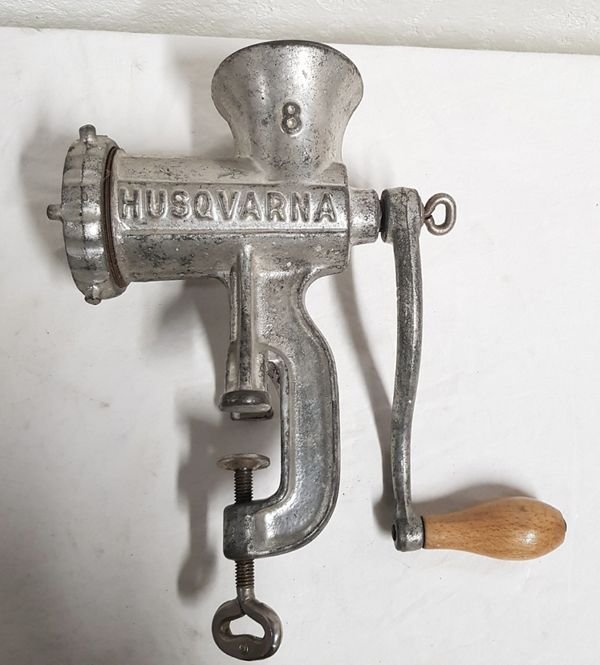Have you ever stopped to think about how the trusty kitchen tool, the mixer, came to be? Let’s take a trip back in time and uncover the intriguing history behind this essential appliance.

The Early Days of Mixing
In the mid-19th century, innovation struck the kitchen when Baltimore tinner Ralph Collier patented the first mixer with rotating parts in 1856.
Shortly after, E.P. Griffith’s whisk was patented in England in 1857. The Monroe brothers, J.F. and E.P., also left their mark with their hand-turned rotary egg beater, which was patented in the US in 1859. These early designs caught the attention of the Dover Stamping Company, which acquired the Monroe brothers’ patent. The Dover egg beaters became a beloved American brand, often referred to as the “Dover beater.” In fact, back in February 1929, a recipe from the Gazette newspaper of Cedar Rapids, IA, even featured the famous Dover beater in a delightful dessert recipe called “Hur-Mon Bavarian Cream.”

The Rise of Electric Mixers
It wasn’t until 1885 that the first mixer with an electric motor emerged, thanks to the ingenuity of American inventor Rufus Eastman. However, it was the Hobart Manufacturing Company that truly revolutionized the industry with their large commercial mixers. In 1914, the company introduced a groundbreaking new model that would forever change the mixer landscape. Throughout the early 20th century, two notable American brands, the Hobart KitchenAid and the Sunbeam Mixmaster, became popular choices among consumers. Although these mixers gained popularity, they remained a rarity in most households until the 1920s, when they began to be widely adopted for home use.
The Birth of the Stand Mixer
In 1908, while watching a baker mix bread dough with a metal spoon, Herbert Johnston, an engineer for the Hobart Manufacturing Company, had a brilliant idea. He realized there had to be a better way and embarked on creating a mechanical counterpart to simplify the process. By 1915, Johnston’s 20-gallon mixer had become standard equipment in most large bakeries. Then, in 1919, the Hobart Manufacturing Company introduced the Kitchen Aid Food Preparer, also known as the stand mixer, for home use. This revolutionary invention soon became a staple in kitchens across the country.
The mixer has come a long way since its humble beginnings in the 19th century. From hand-turned rotary beaters to the introduction of electric motors and the birth of the stand mixer, this essential kitchen tool has undergone numerous innovations to make our lives easier in the kitchen.
So, the next time you whip up a batch of cookies or blend together a mouthwatering cake batter, take a moment to appreciate the rich history behind your trusty mixer. After all, it’s a testament to human ingenuity and the desire to simplify everyday tasks.





